Search Underway for Disappeared Cessna With 4 Passengers
ZAGREB, 29 May 2022 - A search is under way for a Cessna with four passengers which disappeared between Slunj and Rakovica around 11.30 am on Sunday, with 80 police and Croatian Mountain Rescue Service (HGSS) personnel searching a large area with drones and dogs.
Croatia Control notified the Civil Protection Operations Centre earlier today that the plane, flying from Split to Germany, disappeared at 2,300 feet north of Rakovica in Karlovac County.
Due to bad weather, the police and HGSS cannot use all the resources at their disposal such as helicopters, while drones are not very effective due to heavy rain and low clouds. The terrain is hilly and wooded, and visibility is low, said HGSS head Josip Granić.
HGSS Rescue Helicopters On Standby as of 1 May
ZAGREB, 16 May 2022 - An increasing number of mountain climbers and tourists in non-urban areas made the Croatian Mountain Rescue Service (HGSS) put its helicopters on standby as of 1 May, one month earlier than usual and they will remain on alert until 30 October, HGSS reported on Monday.
HGSS noted that this is the first time its rescue helicopters were put on alert so early in the year as they are usually made available for standby service as of 1 June.
"However, because of the continual increase in the number of mountain climbers, recreational hikers and tourists in non-urban areas, it is necessary to put helicopters on stand-by earlier and that will last until 30 October," HGSS chief Josip Granić said.
He added that HGSS is working on forming additional teams in order to be able to react at any time of the year including prior to the peak tourist season and postseason. Soon helicopters will be on alert throughout the year.
For more, check out our lifestyle section.
Croatian Mountain Rescue Service Turns 72: 'We Only Have One Wish'
February 24th, 2022 - The Croatian Mountain Rescue Service was founded in Zagreb 72 years ago. Nowadays, they have 1148 volunteers deployed in 25 stations all over the country
‘For 72 years now, a call to any member of the Croatian Mountain Rescue Service (HGSS) has been a call to action to the entire service. In those moments, members of the HGSS put their lives aside so that they can save others. That is why we don’t ask for cards and gifts on our birthday, but we do ask one thing of you: educate yourselves, inform yourselves and get yourselves appropriate equipment before going on an adventure in nature. It’s the best way to ensure we don’t meet. If you found yourselves in the thick of it anyway, you can count on us’, said the members of the HGSS on their birthday.
On this day 72 years ago, the Founding Assembly of the Mountain Rescue Service in Croatia was held in Zagreb. The idea of a team of volunteers saving lives is ingrained in each of the 1148 volunteers of the HGSS, deployed in 25 stations all over Croatia. They’re all committed to a single mission - prevention, education, rescue and search for the injured.
‘Since the service was established, the HGSS has participated in over 10,000 rescue missions. Last year alone, we carried out 754 rescue missions and 150 interventions. Our crews took part in 196 searches, 27 actions on water and 48 actions in ski resorts. In addition, at the end of 2020 and the beginning of 2021, we faced the greatest tragedy since Croatia's independence: the disastrous Banovina earthquake. HGSS is still active in that area as an intervention force, and is a fundamental component of the civil protection system and a part of the Homeland Security system. We visited 1420 locations, conducted 2164 preventive visits, successfully carried out 683 high-altitude missions and 39 operations involving search teams with search dogs who located people and animals under the rubble’, said head of the HGSS Josip Granić.
‘Members of the HGSS are volunteers - primarily alpinists, but also speleologists, high-altitude mountain climbers and skiers trained in first aid and all mountain rescue techniques, including helicopter rescue, search operations in inaccessible terrain, and operations involving search dogs. They give their knowledge and precious time unconditionally and at any given moment in order to save the lives of others. People with big hearts and the wish to help others are the biggest treasure we have. Without them, there would be no HGSS. This is why we again appeal to all citizens and nature lovers - inform yourselves and gear up before an adventure in nature. Look after yourselves, and we’ll keep looking after you’, said Granić.
Happy birthday, HGSS, and thank you for all that you do!
International Search and Rescue Dog Day, April 25
April 25, 2021 - Search and rescue dogs were deployed after the 29 December earthquake in Petrinja, and 18 dogs of the HGSS mountain rescue service helped locate six people under the rubble, the Ministry of the Interior Civil Protection Directorate said on International Search and Rescue Dog Day, April 25.
The International Search and Rescue Dog Organisation in 2008 declared the International Search and Rescue Dog Day, which has been observed every year on the last Sunday in April.
A dog used in search and rescue operations replaces up to 30 people who would be needed to search an area in the same period, the ministry said.
It recalled that on 26 November 2019, when a 6.4 magnitude earthquake hit Albania, Croatia sent to that country a search and rescue team with 15 members of the Civil Protection Directorate and eight search and rescue dogs.
A dog's sense of smell is 10,000 times better than that of a man, and they hear and see better than humans. These traits make dogs man's best friends and well co-workers in crises. Search and rescue teams, consisting of a dog and its handler, are exceptionally important in civil protection forces and are indispensable in rescue operations.
Search, and rescue teams save people's lives in urban areas when earthquakes, explosions, and large-scale disasters happen.
Search and rescue dogs easily locate the place where a person is trapped, regardless of the distance and obstacles between them and the victim. They can search 1,000 square meters of rubble in only 20 minutes, the Civil Protection Directorate said.
To keep up with news in Croatia, follow TCN's dedicated page.
Nova Gradiska Vandals Attack HGSS Mountain Rescue Earthquake Aid Vehicle
January 27, 2021 – The veteran vehicle of HGSS - the Croatian Mountain Rescue Service, was between shifts assisting those in the area affected by the Sisak-Moslavina earthquake when it was attacked by Nova Gradiska vandals and left inoperable
If we've learned anything from the last 12 months, it's that you never know what's just around the corner. Unpredictable pandemics and earthquakes have sent shock waves through our society and psyches. Another thing we've learned is that, in such unsettled times, it's sometimes essential to lean on the shoulders of others, to ask for help.
That's what HGSS – the Croatian Mountain Rescue Service do. They help others in times of need, at times when they may never have suspected they would need help. Within the last 48 hours, harsh weather conditions have visited some areas of Croatia leaving terrain difficult and dangerous to pass. Yesterday saw the identification of bodies belonging to two Croatian men tragically killed in the mountains by such harsh conditions. When people get lost or trapped in such terrain and conditions, HGSS are usually among the first to be dispatched. Each of its members are volunteers. They leave their homes, their families, their workplaces to venture out into unknown situations to help complete strangers. It's a shame such actions are not always reciprocated.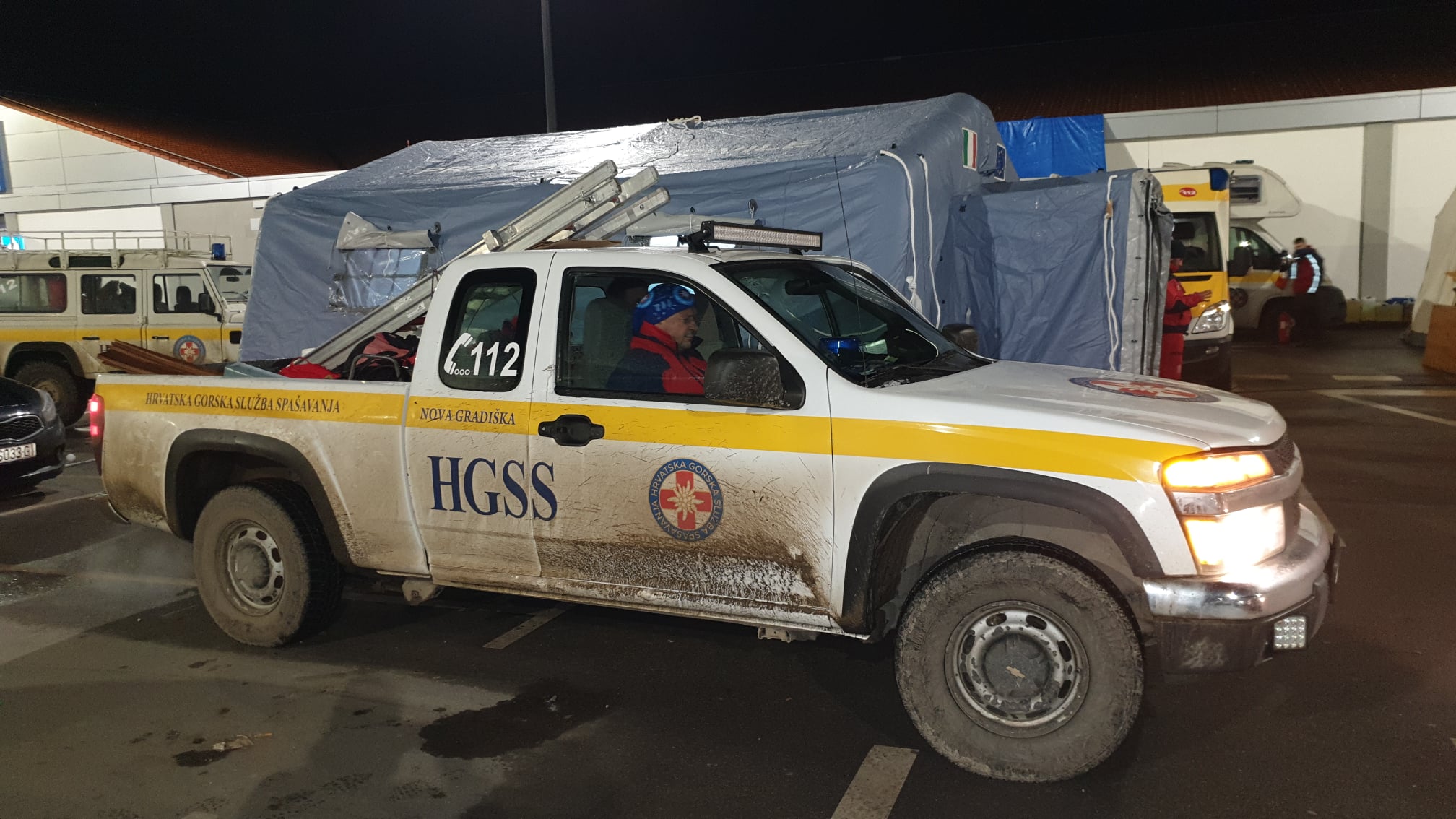 HGSS Nova Gradisak pictured at work recently in the earthquake-affected area of Petrinja © HGSS
HGSS Nova Gradisak pictured at work recently in the earthquake-affected area of Petrinja © HGSS
Nova Gradiska vandals thought little of any consequences when, sometime over the last 36 hours, they attacked a veteran HGSS vehicle parked up in their town. The relatively minor damage caused by the Nova Gradiska vandals nevertheless rendered the vehicle inoperable. It was later towed away and ineligible for emergency calls. With their mindless, petty actions, the Nova Gradiska vandals have placed lives – perhaps some within their own community, even their family – at risk.
The vehicle attacked by Nova Gradiska vandals belonged to the HGSS team of Slavonski Brod. It was between shifts of service in the earthquake-affected area of Sisak-Moslavina. Nova Gradiska vandals ripped off the vehicle's rearview mirror, its windscreen wipers and both of its number plates, front and back. Both license plates - front and back - plus the rearview mirror and the windscreen wipers were torn off in the senseless and dangerous attack © HGSS
Both license plates - front and back - plus the rearview mirror and the windscreen wipers were torn off in the senseless and dangerous attack © HGSS
Luckily, Slavonski Brod's HGSS team has four vehicles in their fleet and they were able to continue their efforts in Sisak-Moslavina. However, the senseless actions of the Nova Gradiska vandals mean there is now one less vehicle at hand to cover the very area in which they themselves live. Here's hoping they, their families, friends and neighbours don't unexpectedly need to lean on the shoulders of HGSS over forthcoming days.
Croatian Search Dogs: Rescue Heroes Who Found Buried People After Quake
January 4, 2021 – No better technology or camera in the world could detect people under the rubble than search dogs. In the recent earthquake that hit Petrinja, Croatian search dogs found two people alive and thus saved their lives.
The earthquake that hit Petrinja, Sisak, Glina, and the surrounding area on December 29, 2020, caused enormous material damage that is still being added up. Along with 14 teams of the Croatian Mountain Rescue Service (HGSS), search dogs also searched for the missing in the ruins. Unfortunately, seven people lost their lives in the quake's rubble, but, thanks to search dogs, two were found alive.
Deputy Head of the Service and head of search teams Neven Putar Neno told Jutarnji list that there are no such mechanical means or cameras that could detect a person under the rubble as quickly as dogs.
"When it comes to saving human lives in such catastrophic conditions, the dog is the most important resource because it can detect a person under the rubble the fastest. We have an awful lot of actions, several times a week throughout the year, where dogs find people, live and, unfortunately, dead," said Putar.
He also points out what all rescuers say – a successful search is not the result of any individual or individual dog's work, but the entire team. Along with HGSS and firefighters, members of KOSPP, the Zagreb club for training search dogs, were also on the field.
Dog barking already tells if a person is alive or dead
Stjepan Gal, a ranger in the Nature Park Papuk and HGSS member, arrived with his dog at the quake-hit area at 4 p.m. As he says, the scenes they saw were unreal. Gal and his dog Adi were in the village of Žažina, where the local church collapsed.
At the time of the quake, parishioners who had come to clear up the damage caused by the less devastating earthquake the day before were in the church. When it shook at 12.20, most of them managed to escape from the building, but one person did not. Beneath the ruins remained a trapped organist who was cleaning his instrument, the organ. Unfortunately, by the time Gal arrived, it was already clear that he was unfortunately dead, and the dog Adi confirmed this with his barking at 6:46 p.m.
Search dog Adi / Photo: Stjepan Gal Facebook
Namely, as Gal says, when a person is found alive, Adi barks happily, and when a person is dead, he is upset and sad and has a specific bark, akin to a growl.
In addition to HGSS members, alpinists and speleologists from Split and firefighters were also at the location. They had to flee the church several times because the ground was shaking all the time, and there was a danger that the rest of the church would collapse on them.
From asylum to HGSS rescue team
The HGSS team from Karlovac, led by Dubravko Butala, also recently arrived in Petrinja. Kruno Stipetić from Ogulin entered the Petrinja City Hall with his dog Draco, where it was suspected that one person was buried under the rubble. Draco signaled that there was a living person inside. Already by the frequency of his barking, Stipetić knows how to recognize whether a person is alive or dead.
Draco is a Belgian Shepherd, seven and a half years old. They wanted to put him to sleep, but Stipetić believed in him, and the dog eventually found and rescued the woman trapped in the rubble.
"When I got him from the asylum, he was aggressive, and everyone said I would fail, but I believed in him. He knows it, and now he's giving me back all the effort. Today, the two of us are called to about 80 percent of Croatia's search operations because we are a perfectly coordinated team. We think and work as one person," says Stipetić.
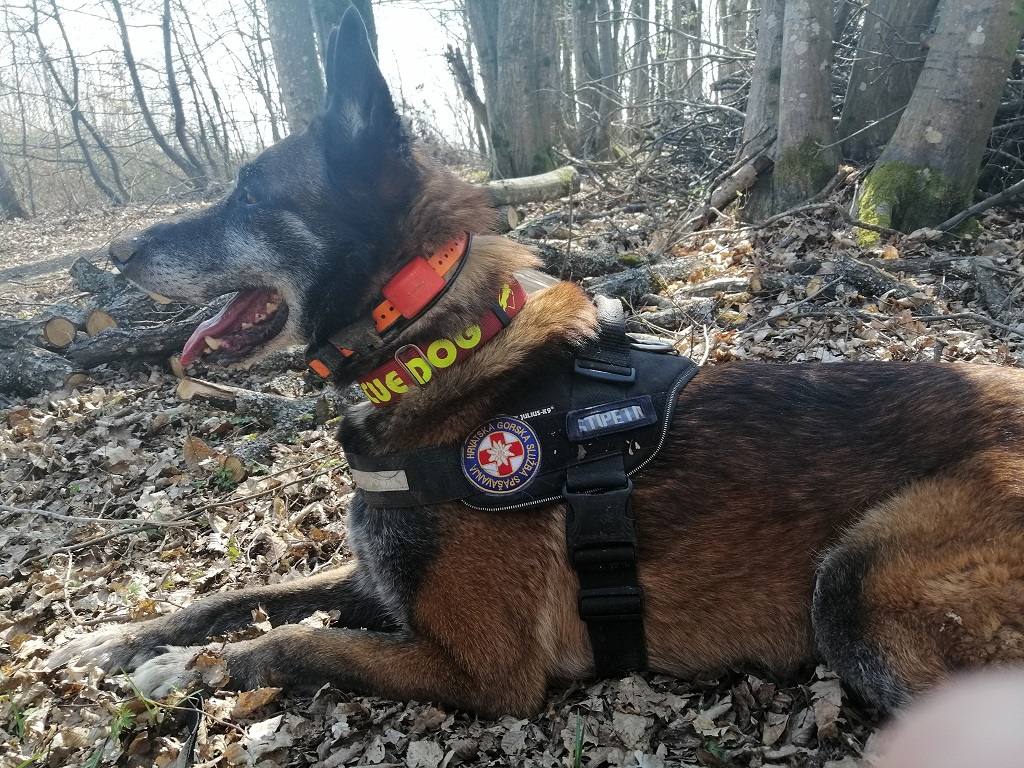
Search dog Draco / Photo: Kruno Stipetić Facebook
Stipetić also says that search teams have a great responsibility. They are the ones who, after inspecting the ruins, establish that there is no one inside and suspend the further search.
"There is no room for error because human lives are at stake," says Stipetić.
'Saving human lives is our biggest motivation'
Dubravko Butala Bana, an HGSS member with forty years of experience, arrived in Majske Poljane, where the scenes were horrific – the village disappeared in a matter of seconds. His dog Thor first discovered two dead people under the rubble of a house.
According to Butala, unlike some other search dogs, his Toho does not bark differently when he smells a living or dead person. "But he feels my vibe, feels when I'm sad or upset," Butala says.
Dubravko and his search dog Thor / Screenshot HRT
While they were at the first house with the victims, they were informed that there were missing people in another ruin. They hurried there.
"Grandparents were under the ruins. Grandpa was sadly dead, but grandma was alive. As we dug her up, we talked to her, and we checked her pulse. We managed to get her out, and that's our biggest reward. That's why we do this job. Us HGSS members are volunteers, and the saved human life is our biggest motivation," says Butala, who tells us that a dog can smell one human molecule under all those ruins.
Crying comes later
Zoran Laslavić is a firefighter from Opatija who set off to Petrinja immediately after the earthquake, along with his search dog Rain and with a team of firefighters from the Primorje-Gorski Kotar County.
"The search with dogs is just one part of the job we do. The dog is always with me and, if the need arises, that is, when there is a suspicion that we have a missing person, then we go in search, and we do all the other work all the time. Although, as firefighters, we see everything, we have never seen anything like this before," says Laslavić on the situation in Petrinja.
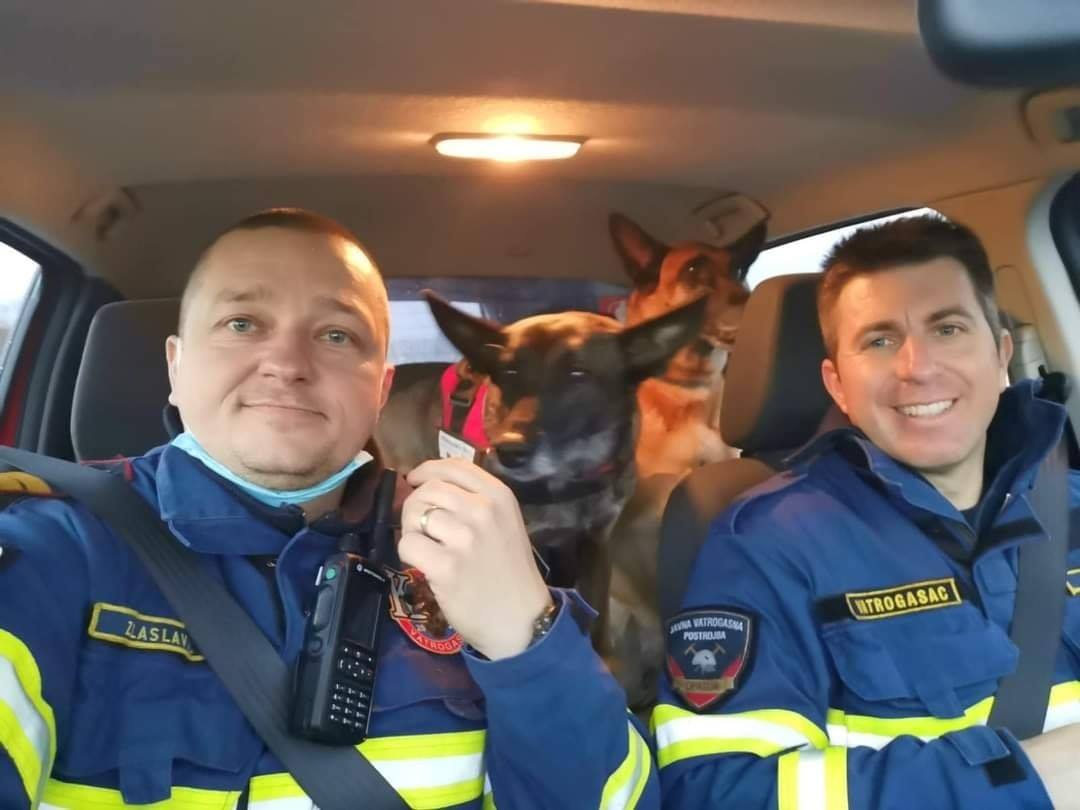
Firefighters Zoran Laslavić (left) and Zoran Ravnić (right) with their dogs / Photo: Zoran Laslavić Facebook
Firefighters are relatively new to working with dogs, compared to HGSS. Laslavić was the initiator of introducing search dogs into firefighters' work in the search for the missing. Today, the service of teams with search dogs has been established, and there are more and more of them all over Croatia. Laslavić is an instructor and leads the training of these dogs in Šapjane.
His wife is also a firefighter and has a search dog, but she did not go to Petrinja. They got a baby a year ago, and their dog Rain adores it.
The search and rescue for missing people was a very emotional experience for all those involved, and they also comforted and helped those who survived. As they work and save lives, rescuers don't think about all that tragedy around them. Emotions come only later when they come home and relax. Then they often cry.
For more on the Petrinja earthquake and to see how you can donate money, food, humanitarian, sanitary and material aid, follow our dedicated section.
VIDEO: Spectacular Mountain Flight - Are Jet Packs The Future of HGSS?
September 30, 2020 – Incredible footage of mountain rescue paramedics trialling jet suits for future use in rapid first response. We spoke to the Croatian Mountain Rescue Service to get their verdict and ask if this will be part of the future of HGSS
Flying above incredible terrain not unlike that found around Lika and Velebit in Croatia, paramedics in the UK's Lake District have been videoed trialling jet suits. They could soon join regular mountain rescue services and air ambulance crews as part of any rapid first response required in difficult to reach places.
In Croatia, such tasks are undertaken by HGSS – the Croatian Mountain Rescue Service, who TCN profiled not long ago. We again spoke to their head of service Josip Granić to ask if jet suits are part of the future of HGSS?
Are Jet Suits the future of HGSS?
“It looks interesting. And fun,” Granić told TCN. “I am sure that if it starts to become regular equipment used elsewhere it could make our job much easier and there will be a place for this in the future of HGSS.”
The benefits of jet suits being any part of the future of HGSS are obvious – they can locate and assist injured hikers or mountaineers in a fraction of the time of land-bound rescuers. The test flight footage shows the suit's inventor Richard Browning flying across the Langdale Pikes looking for walkers in a simulated casualty scenario. Within minutes, he locates a woman and child that would have taken rescuers on foot over one hour to find. But, although the future of HGSS could be assisted by such suits, mountain rescuers will surely not be the only ones to whom they are available.
“They will also create a completely new set of risks and potential accidents in more remote areas,” said Granić, with a cautionary tone. HGSS members are volunteers and already put themselves in considerable danger to assist those in need of help. Jet suits add an extra dimension of risk for anyone wearing them and the recreational use of jet suits could place further stress on the future of HGSS.
“I’m sure it will be a great tool once it’s out on the market,” says Granić, “but it could also be a great toy and that could be problematic because it will open up a completely new set of problems. But since we are the service for problem-solving, I’m sure that HGSS will find a way to deal with it.”
For the latest travel info, bookmark our main travel info article, which is updated daily.
Read the Croatian Travel Update in your language - now available in 24 languages
Polish Ambassador Thanks Croatia For Efforts To Find Missing Hiker
August 22, 2020 – Polish Ambassador Andrzej Edward Jasionowski writes in heartfelt gratitude on behalf of the Polish Republic and its people. Addressed to Interior Minister Davor Božinović, the letter sincerely thanks Croatia, HGSS, the police, army and volunteers for their tireless search.
The Polish Ambassador, Andrzej Edward Jasionowski, has sent an official letter of gratitude to Croatia for the sustained efforts in trying to find a missing hiker. The document was sent to Croatian Interior Minister Davor Božinović but clearly it is addressed to members of HGSS, the Croatian police, army, air force and the country's volunteers who manned the search.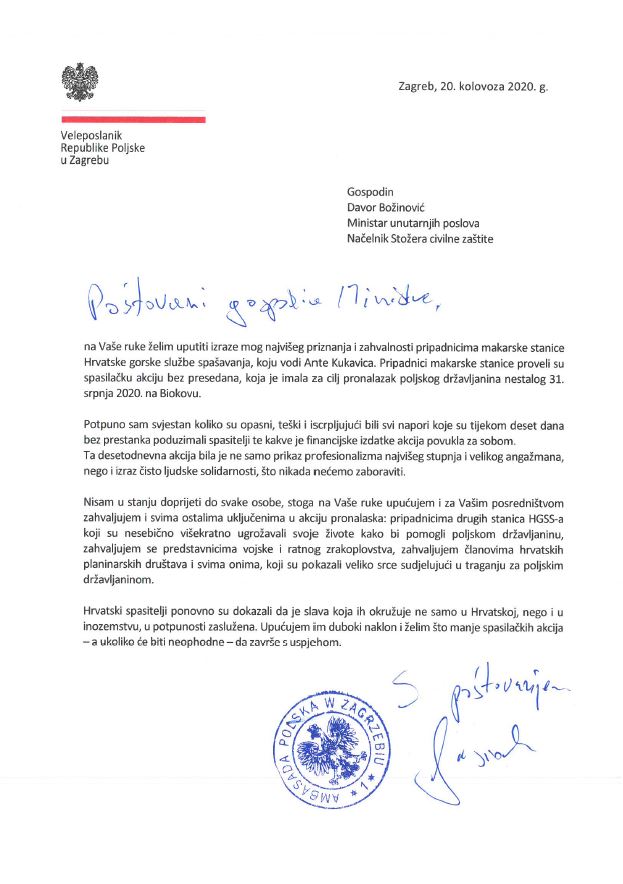
Letter sent by the Polish Ambassador
In the letter, Polish Ambassador Mr Jasionowski details his inability to address individually every member of the vast search party, who scored the mountain range around Biokovo for his missing countryman. In sending the letter to the head of the Ministry for the Interior, he clearly wishes the sincere thanks to be passed on to all those involved in the action.
Polish Ambassador Mr Jasionowski also acknowledges, on behalf of the Polish nation, his awareness of the cost of such an extensive search. 600 people including members from 15 stations of HGSS (the Croatian Mountain Rescue Service) from across Croatia, mountain rescuers from Bosnia and Herzegovina, the Croatian army, the Croatian police, members of mountaineering associations and many volunteers were involved in the search. Croatia allocated €160,000 for helicopter flights and the aerial search alone. Volunteers were assisted on the search by tracking dogs and drones, which took thousands of photos.
39-year-old Polish national Lukasz Dariusz went missing while hiking on Biokovo on Friday 31 July 2020. Unfortunately, he still remains missing.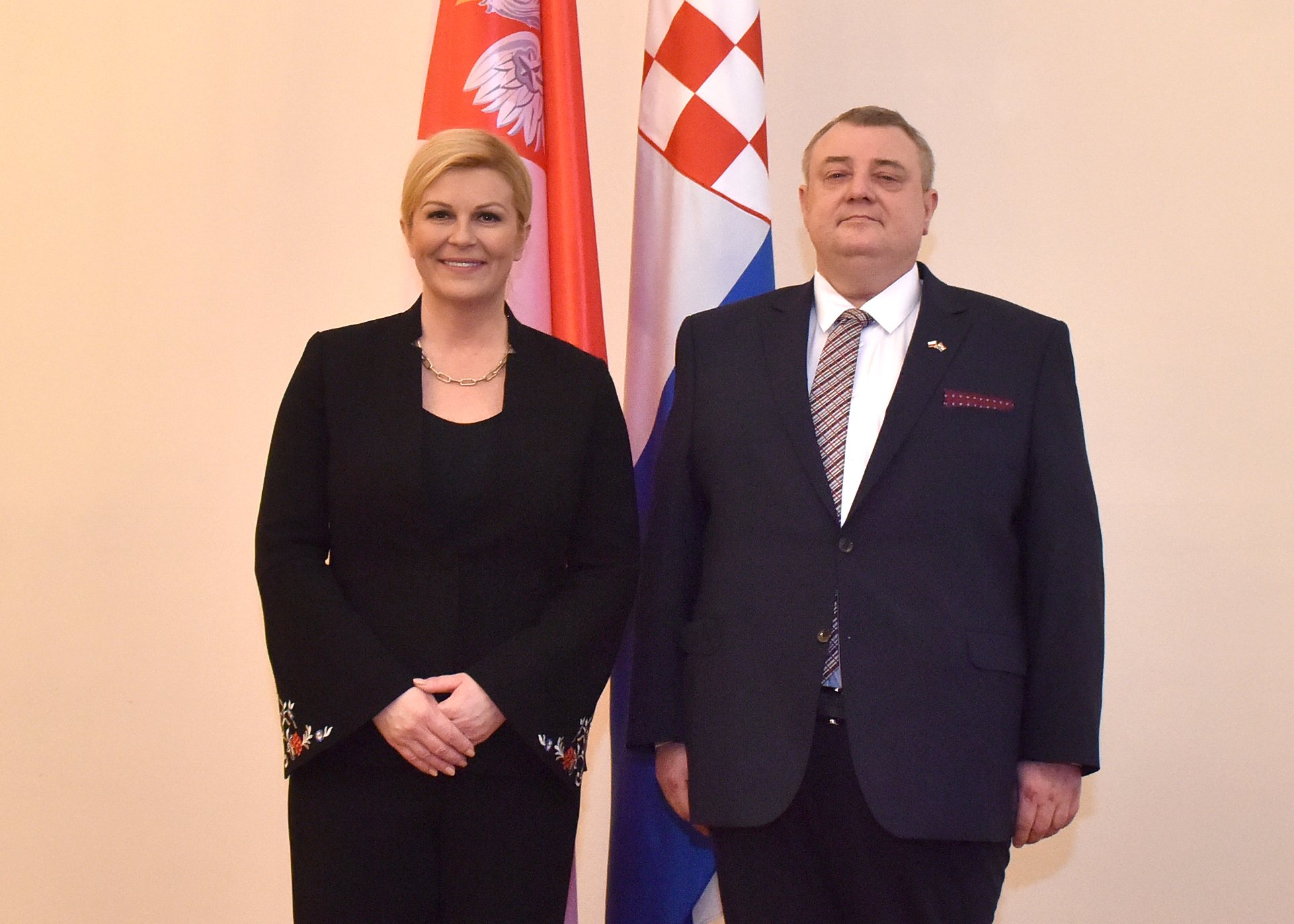
Polish Ambassador to Croatia Mr. Andrzej Edward Jasionowski, pictured with Mrs. Katarina Grabar-Kitarović in 2018 © Polish Embassy Zagreb
Meet HGSS The Croatian Mountain Rescue Service
August 19, 2020 – All weather, all terrain, all year round – meet HGSS The Croatian Mountain Rescue Service, amazing volunteers who will never let you down
They're never far from the news. For the last two weeks, members of HGSS The Croatian Mountain Rescue Service have yet again been on the TV news every night. They're leading the search for a summertime visitor, a Polish hiker missing on Biokovo mountain.
But, watch again this winter and, for sure, they'll be in the headlines once more. Whether, they're scaling mountain ranges in the unbearable heat of high summer, searching underwater caves, flooded rivers or the sea, breaking through wild forest or trudging through metres of snow, they undertake their search and rescue missions over every terrain, in every weather condition, in every month of the year, all across Croatia. And, they all volunteers.
Marc Rowlands meets the head of service for HGSS The Croatian Mountain Rescue Service and three of its volunteers to find out who they are and what makes them do what they do.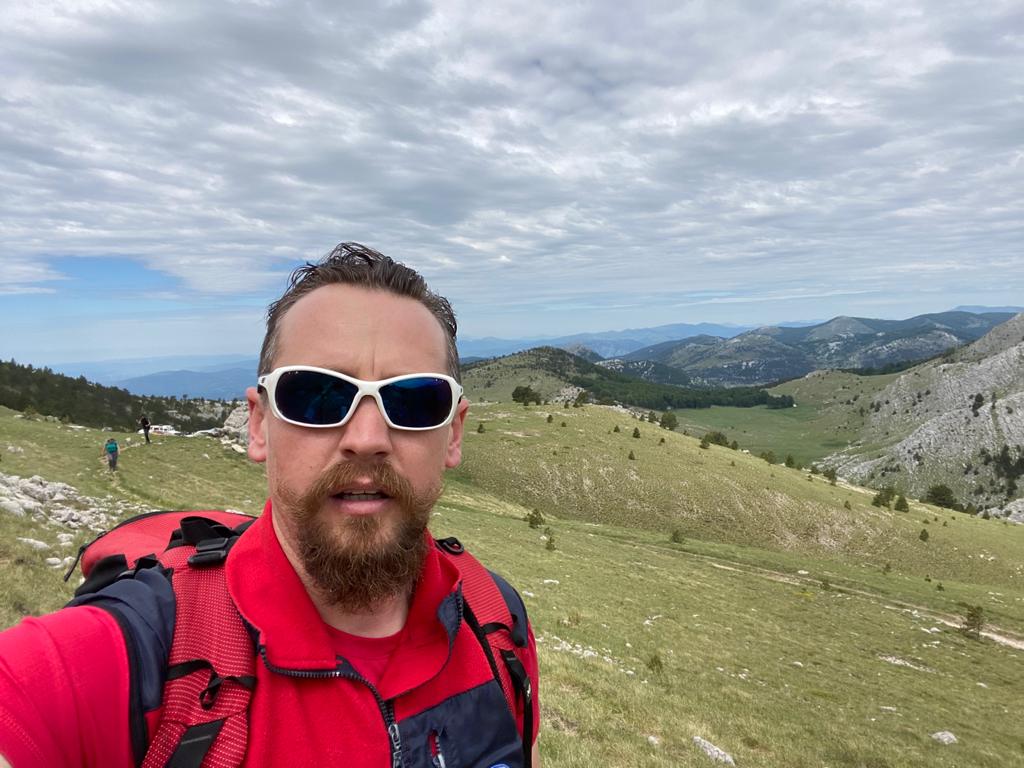
Josip Granić, head of service for HGSS The Croatian Mountain Rescue Service
My name is Josip Granić. I'm the Head Of Service for HGSS The Croatian Mountain Rescue Service. We've had an extremely busy couple of weeks. Being head of service for an organisation like this under such circumstances means you're always on the phone; co-ordinating, talking to outside organisations, members of the press. Communication. It's a 24/7 job, 365 days a year. If people need help, you can't take a holiday. Not at this level of the organisation.
We have around 1000 members. There are 11 paid positions in the main organisation and 25 people we pay to run the administration in each of the teams or stations we have. All of the members who perform the search and rescue are volunteers. We have pilots, surgeons, nurses, students, professors, every part of society.
I'm originally from Kaštela, but my home station is in Karlovac. I've been there for 15 years. I've been Head Of Service for two. Since I assumed the position, I've spent most of my time in the car. I travel all over Croatia.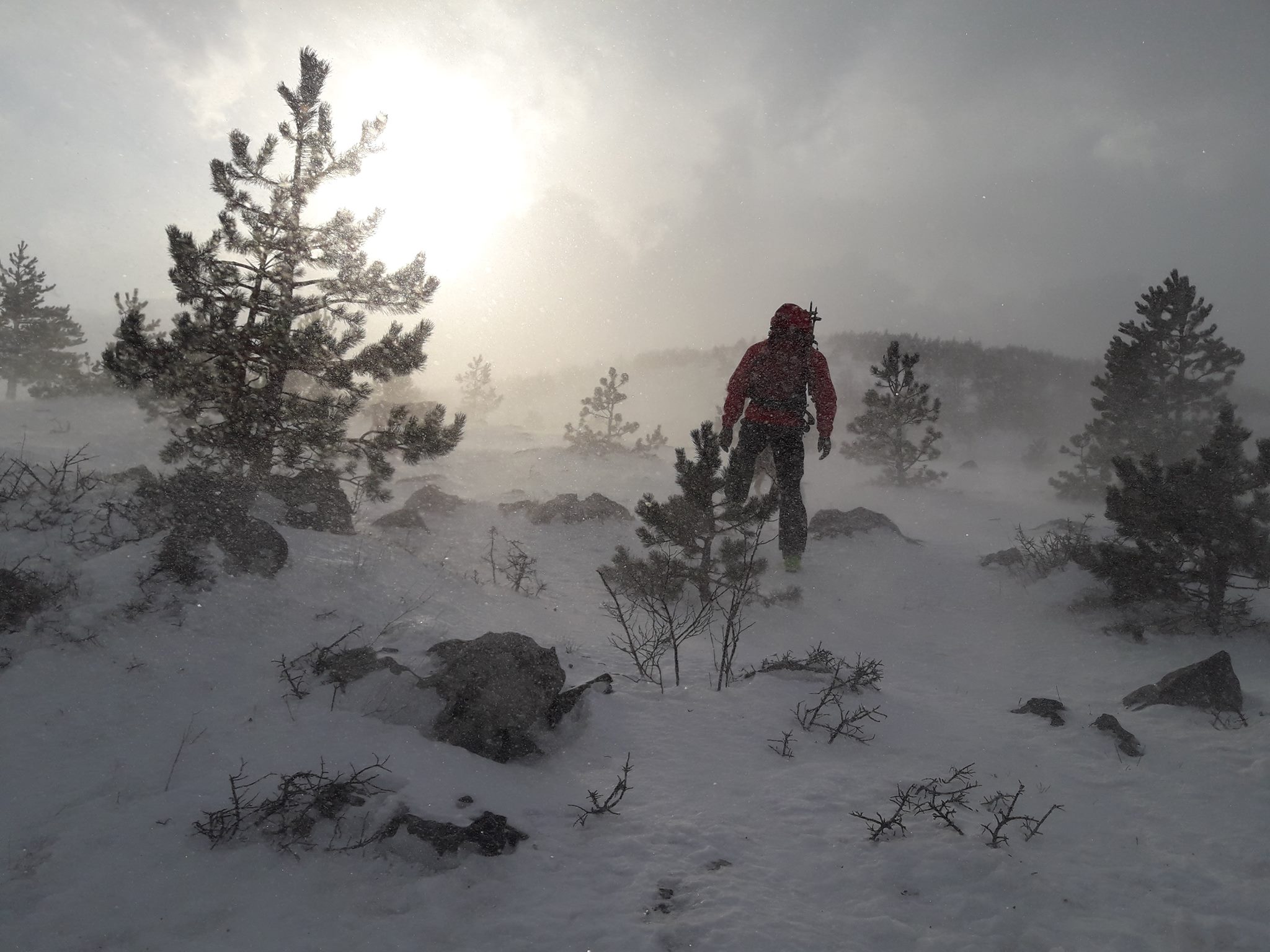
HGSS The Croatian Mountain Rescue Service missions can be hampered by extreme weather conditions © HGSS The Croatian Mountain Rescue Service
To get a certified position as a mountain rescuer in Croatia you all do the same training. It doesn't matter if you come from Slavonia, Dalmatia or Istria, you must have the knowledge and ability to deal with circumstances in any terrain; caves, pits, mountains, on snow, underwater.
Depending on where your station is, the type of call-outs you get could be very different. In Slavonia, 90% are for missing persons - searching forests, rivers, and in floods. We've had a big search on Biokovo mountain for the past 16 days. The stations from Split, Makarska, and Dubrovnik were at first involved, then teams from all over Croatia. It's not the same as Slavonia. The terrain is very different, so you have to be good at a particular set of skills. But, the largest percentage of call-outs is still missing persons. It's 70% of our work nationwide. The other 30% are rescues.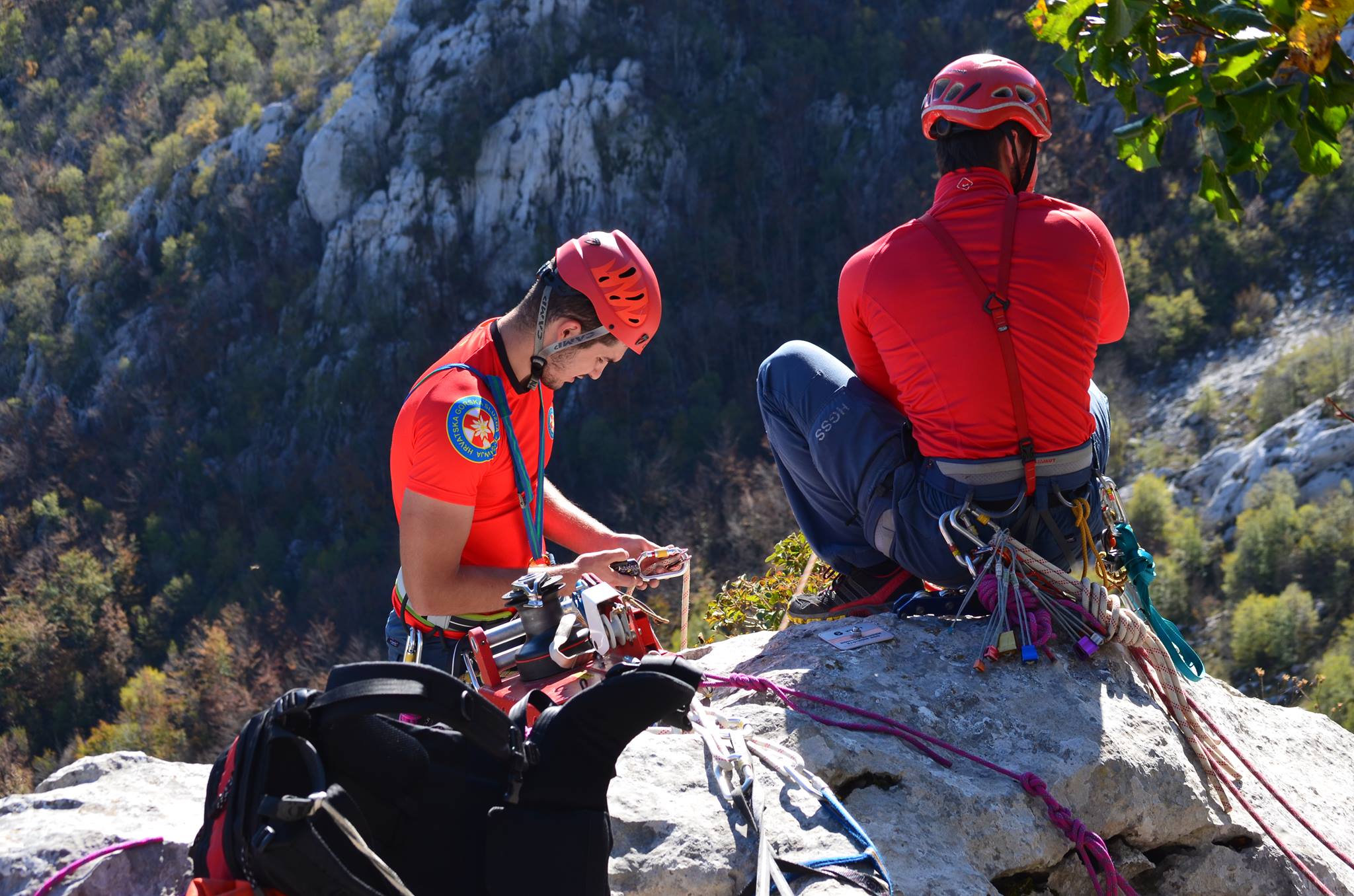
HGSS volunteers are educated to use a wide range of technical equipment. They are trained to operate in all the different kinds of terrain found across Croatia © HGSS The Croatian Mountain Rescue Service
There are usually 800 – 1000 missions a year across the country. We get roughly the same amount of calls in colder months as in warmer months. Only, winter months can be busier. The terrain is more difficult. There are some villages in Croatia – usually where the front line of the fighting was, around Karlovac, Kordun, Lika – and when it snows, it can be almost impossible to reach those places. But, some older people still live there. It can take days to reach them on snowmobiles, then skis, to deliver food or medecine. The other busiest places in winter are the ski resorts - Platak, behind Rijeka, and in Zagreb, on Sljeme. There are teams stationed in those places throughout the snow season.
What's the greatest danger of the job? Almost everything. Nothing in this job is easy. The greatest dangers we face are the same facing those that we rescue - underestimating the environment, nature, the conditions. That's where our training comes in.
In mountain rescue, we separate dangers into subjective, objective and technical. Subjective is the stuff you're guilty of - lack of preparedness, knowledge or equipment. Objective dangers are the ones you can't control, like sudden changes in weather, or avalanche. If you're sensible and informed, there should be no objective danger.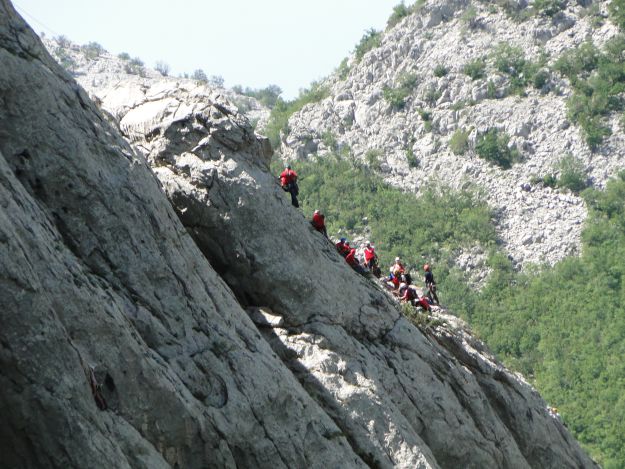
HGSS on a mission, clinging to a steep incline in Paklenica © HGSS The Croatian Mountain Rescue Service "People need to be aware at all times on the mountains. By the time most people think they may be in trouble, they've usually been in trouble for five or ten minutes already" Josip Granić.
80 – 85% of the people we rescue are Croatian. Only 15 – 20% are guests. People from Czech Republic, Slovakia, Poland, (Austria and Slovenia too) tend to enjoy nature more. They like hiking. That's the reason there are typically more rescues for those nationalities than there are for British, Belgian, French, Italian, America, Canadian or Australian guests. I don't remember the specific year, but sometime between 15 and 20 years ago we had a season where 5 or 6 Czech nationals were being searched for or, sadly, turned up dead. The media covered it and ever since there's been this myth that all the people who get into difficulty are Czech.
The question about expensive helicopter rides - why don't you charge the people you rescue - has been here forever. It's like this - if you're a tourist and you have a car accident in Croatia, the fire service, police and an ambulance will come. You won't get charged. We are a tourist country. According to international agreements, we are obliged to make everything safe for residents and guests alike. We are here, just like the fire service and police, to do our part. The Croatian air force is responsible for the helicopter rides and I have to give credit to them - they are crazy good pilots. Amazing. Even if we did charge everyone we saved - and most of the 85% of Croatians we save would struggle to pay - it still wouldn't be anywhere near the money required to run this service.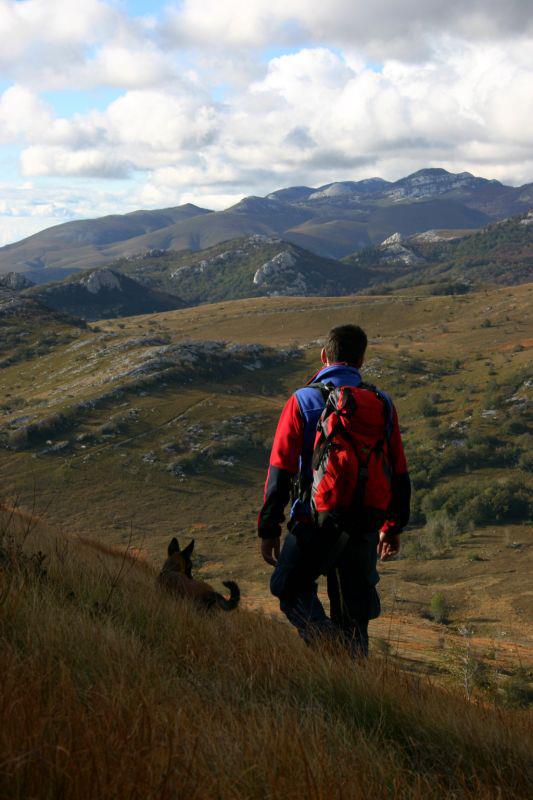
The Croatian Mountain Rescue Service used specially trained dogs on their searches © HGSS The Croatian Mountain Rescue Service
In 2007, I got a new search dog. It came from the Ogwen Valley Mountain Rescue service in North Wales. We cooperate a lot. We were sent out on a job to look for a three-year-old male child who had gone missing near Požega at the beginning of January, wintertime. His grandma was watching him and they were in a house on the edge of the woods. Early in the morning, he was playing with a dog. It suddenly ran into the forest and the boy chased after him. The grandmother didn't see it happen. I found him using my new dog, just after 8 o'clock the next morning. He'd been alone in the freezing forest for almost 20 hours.
Time is really moving fast on a job like that, because it's a kid and because it's so cold. Survival rates in such conditions are not good after 24 hours. When I found him, saw that he was alive, those big eyes looking up at me, it's a crazy feeling. You can't describe it. You can't compare it. A lot of positive emotions.
Every mission is special. We meet them all with the same level of determination and professionalism. But, it's the ones where you know you've really saved someone that stand out in the memory. Not the broken leg, where you transported someone – sure, that's an excellent job. But, when you know you've saved someone's life, that they definitely wouldn't be here now if it weren't for you, that's what makes it all worthwhile.
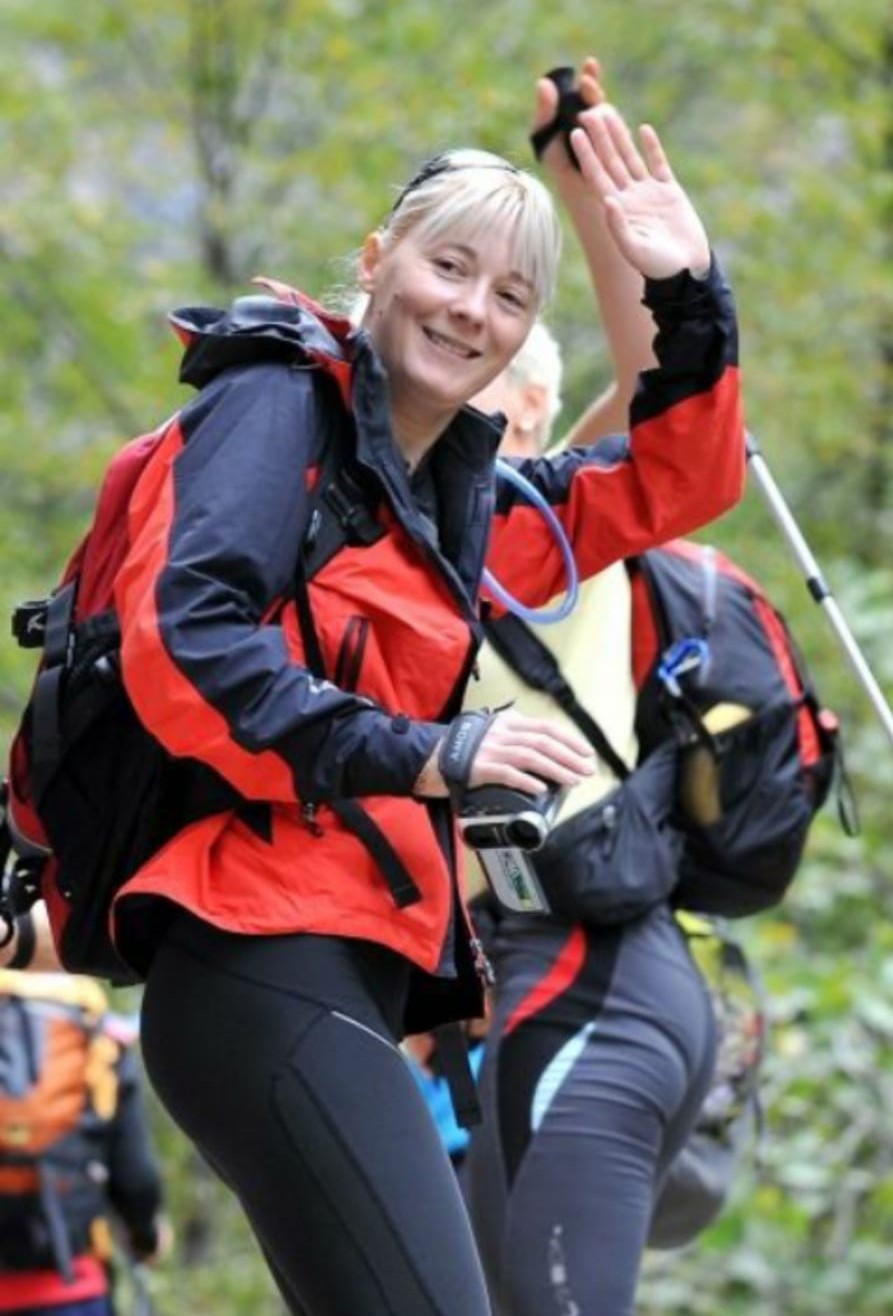
Jana Mijailović, volunteer for HGSS The Croatian Mountain Rescue Service
My name is Jana Mijailović, I'm 48 years old and I'm from Zadar. I finished school to be a teacher, but I never did it. My husband and I run a company that does plastic and aluminium windows for houses.
I started to go into the mountains when I was at high school. I never had the ambition to be part of mountain rescue services – people just noticed me on the mountains. They said I'd be good at it and asked me to join. I met my husband on the mountains. We are both volunteers for HGSS The Croatian Mountain Rescue Service. I've been doing it for 16 years.
I was a member of the first and second all-female Croatian expeditions to the Himalayas. We first climbed Cho Oyu in 2007, then Mount Everest in 2009. Croatia is the only country in the world that has only one successful male climber of Mount Everest, but four successful female climbers. I sometimes work as a guide too. I guess you could say I'm all about the mountains.
Being a climber, an Alpinist, I know that if I get into trouble, it's only my HGSS colleagues who can help. I feel this instinctively. I cannot be in the house, safe and warm, knowing that maybe someone needs help that only I can provide.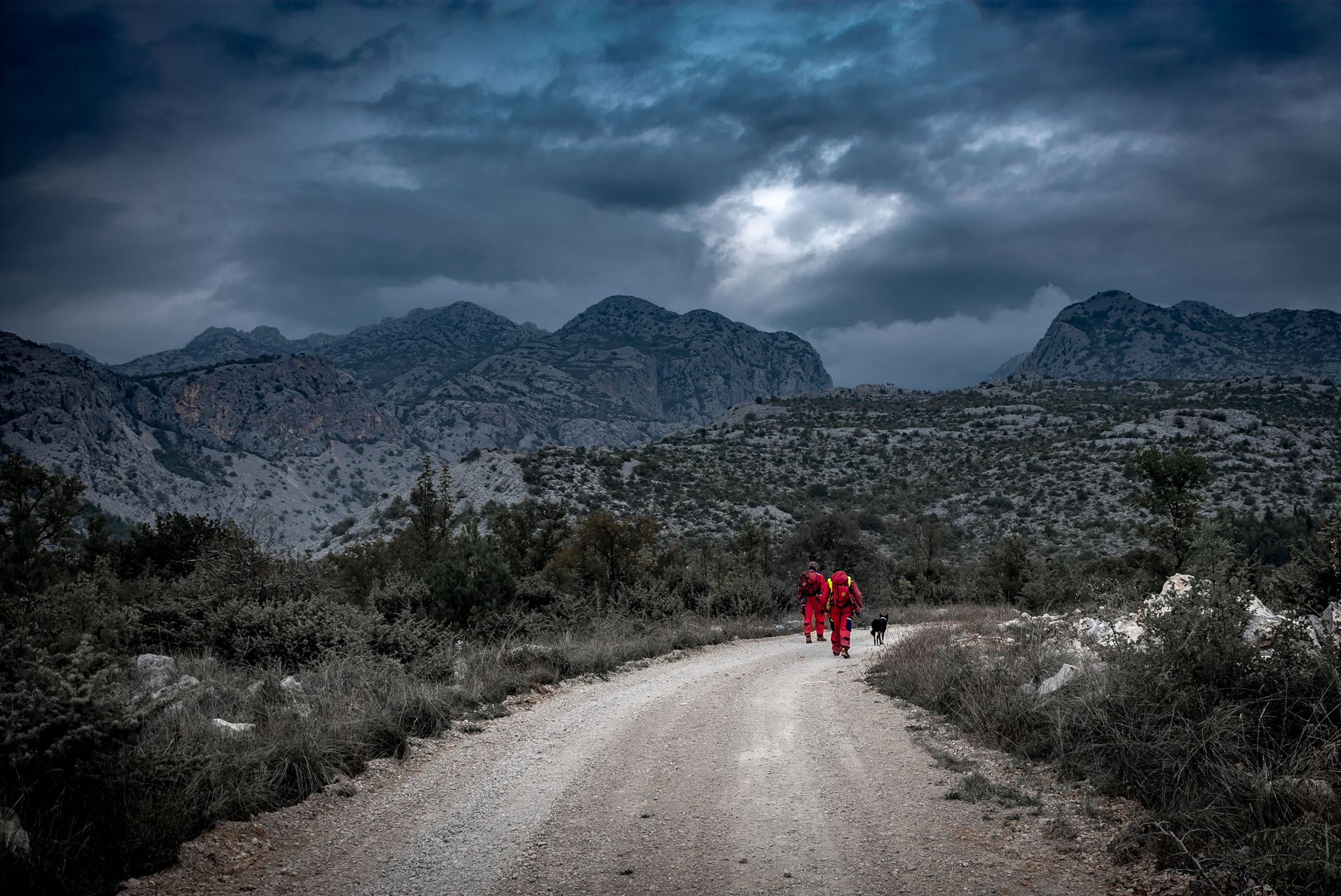
HGSS The Croatian Mountain Rescue Service members entering Paklenica under foreboding skies © HGSS The Croatian Mountain Rescue Service
I've really been on so many expeditions with HGSS. My station are on duty in the season at National Park Paklenica and I'm now the coordinator. Climbers from all around the world come and so there are many interventions. None of them are easy because the terrain is incredibly difficult. You really have to be in shape and know the techniques inside out.
I'm very proud of my statistics. Everyone I've rescued, who was alive when I reached them, is still living today. Unfortunately, not everyone we reach is alive when we arrive.
I remember one time, my husband and I were having dinner. We were arguing about the techniques and knots for moving a stretcher down a vertical climb. The training is so intense, you really have to know it well, and I guess that's just the kind of people that we are, that we would be arguing about it in our free time. Ha! He told me, "Why do you care? You'll never have to do that," because usually, it's really strong guys who do that specific job. If you're on a 400-metre-high section of rock, it really takes a lot of muscle.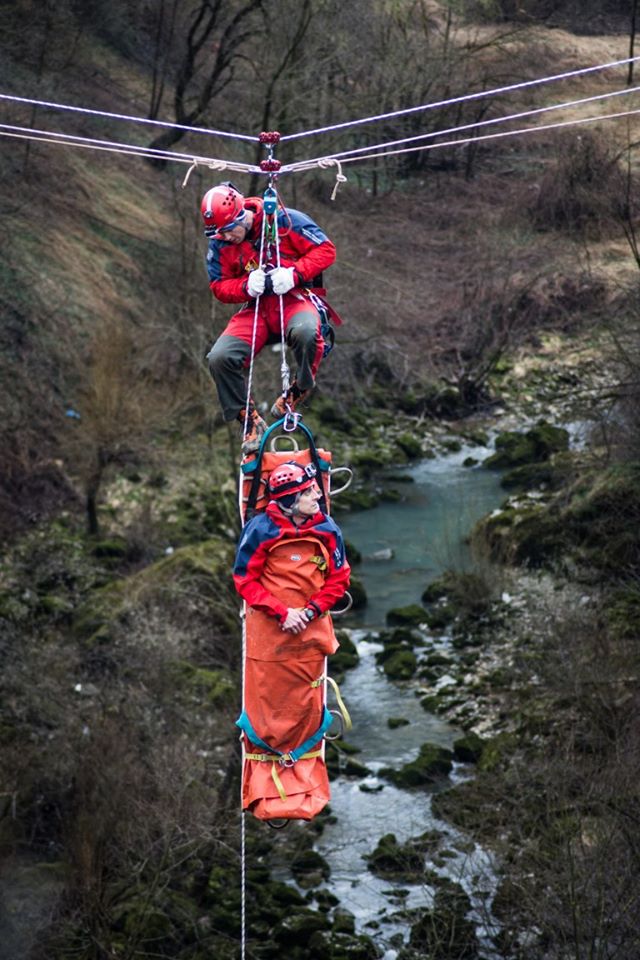
Ascending from a valley floor or descending from a mountain peak with a stretcher is a technically difficult operation, often hindered by darkness and adverse weather conditions. It requires a lot of training and a lot of muscle © HGSS The Croatian Mountain Rescue Service
In the evening, just two days later, we were called out to rescue an Italian guy who broke his leg on Anića Kuk. It's a really mighty part of the stone. And the leader of the expedition asked me to go on the stretcher. They pull you down on the ropes and you have to push very hard to keep the stretcher, the person you're carrying and yourself away from the rock, while balancing the weight of all three. It was dark, raining and with lots of Bura, the incredibly strong wind that sometimes hits us. That's probably my most memorable rescue.
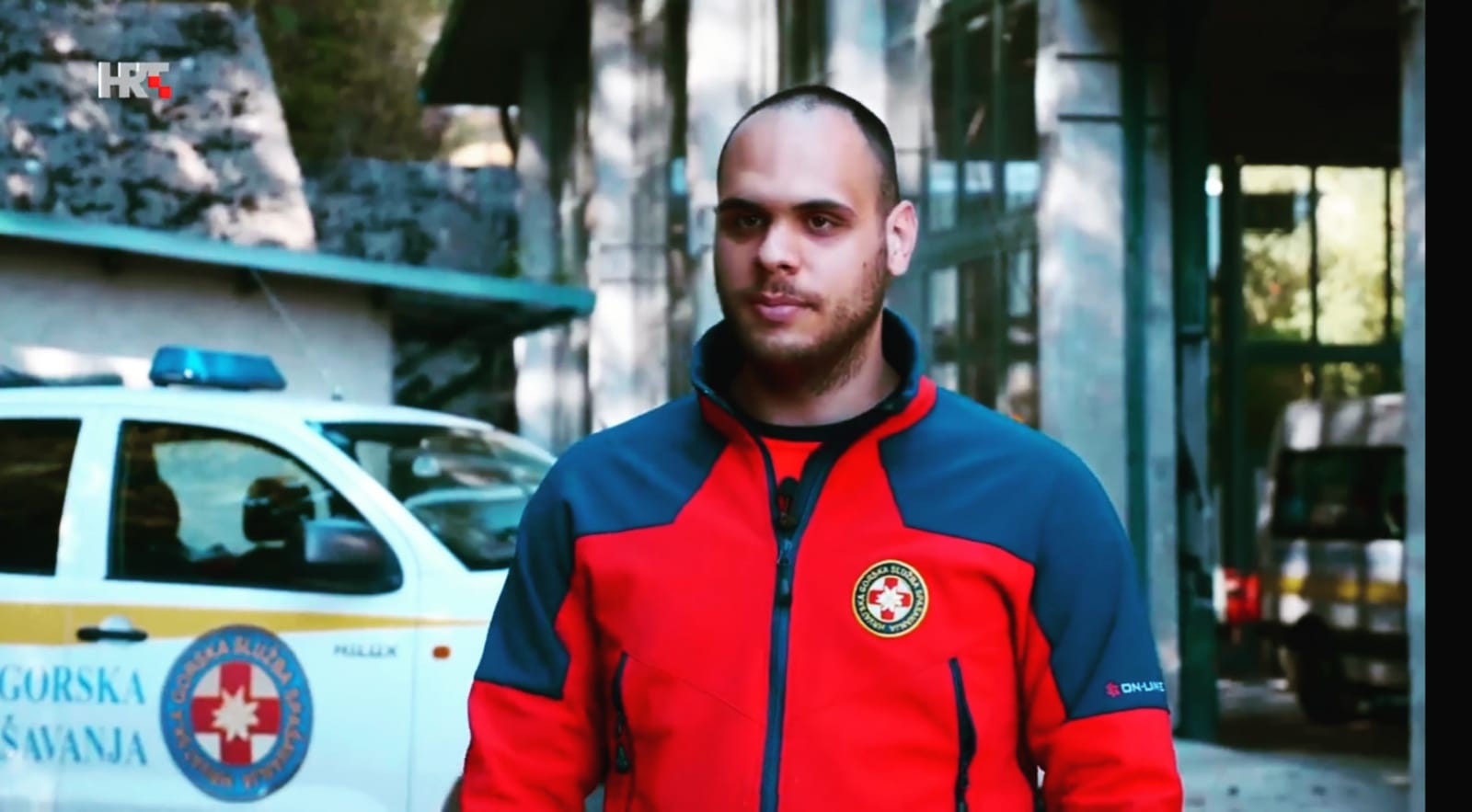
Petar Prpić, firefighter and volunteer for HGSS The Croatian Mountain Rescue Service
My name is Petar Prpić, I'm 25 years old and I'm from Hrvatska Kostajnica, just on the Croatian-Bosnian border. My station is in Novska. In my full-time job I'm a professional firefighter. I guess I have two dangerous jobs. Well, one job and one hobby.
I've always been interested in the outdoors – mountaineering, hiking, canoeing. But, that's not why I joined HGSS The Croatian Mountain Rescue Service. I just wanted to help people. I don't know, I guess it's just something in me.
We have a lot of rivers in our area. During the times of flood, we get a lot of call-outs. Our part of the country has a high percentage of elderly people in the population. A lot of them live in small villages, on the edge of the forest. We get a lot of call-outs for searches. Especially in the autumn when people go out looking for chestnuts or mushrooms. But, like all the stations in Croatia, we are here year-round if there are any actions in other parts of the country that need us.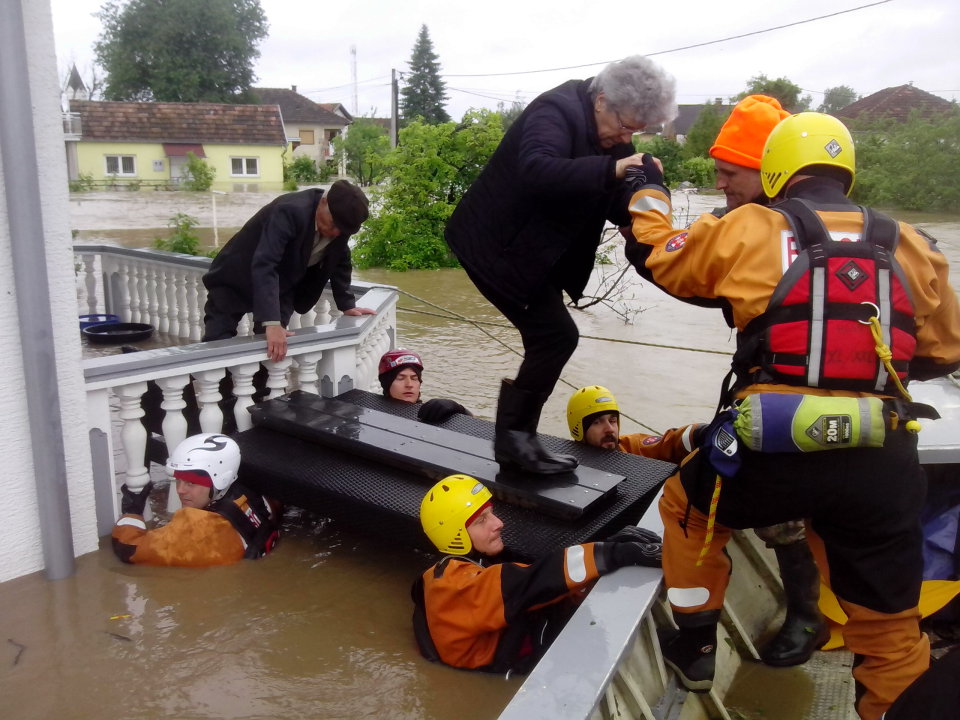
In some areas, HGSS The Croatian Mountain Rescue Service are frequently called out in response to flooding. This picture shows HGSS members on operation during the 2014 floods. In that year, flooding across the whole region was so bad that HGSS members operated not only in Croatia, but also donated their services to neighbouring Bosnia and Serbia © HGSS The Croatian Mountain Rescue Service
I was just on the search in Biokovo. The head of service called me and asked me to go. I first had to get some free days from my job. I called my boss, Zvonimir Ljubičić, chief of the fire department. He's great, very understanding, and he gave me permission. Two years ago I was called to Rab. Very hard operation, very difficult terrain.
Late last summer, we were called out to look for an older man near Glina. It was around 11 o'clock in the evening. He'd gone to look for mushrooms in the afternoon and never came back. Police were there and they sent for us.
The man had a cell phone on him, but there was no signal. There was no location given off the phone. We were a team of four, split into two teams. We went up into the woods above Glina and concentrated our search on areas where we could see there was no telephone signal on our phones. We were yelling in the dark. After an hour of search, someone answered. He'd been missing since 2pm. We found him at 2am. He was just lying there, uninjured but unwell, unable to move.
The reason it sticks in my mind is that the next day, in the morning, his daughter called me. She was so thankful, so emotional. For sure we saved his life. None of the other emergency services who were present could find him. It was down to us. We finished the operation at about 6am and then all four of us had to go immediately to our regular jobs.
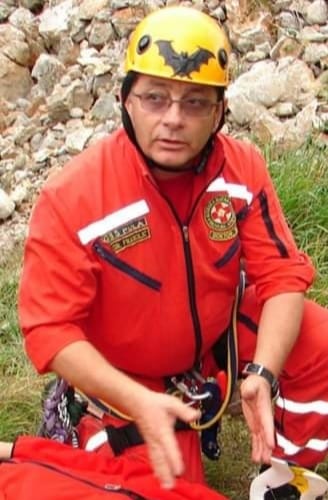
Mario Franolić, physician, ex-commando and volunteer for HGSS The Croatian Mountain Rescue Service
My name is Mario Franolić and I'm 60 years old. I'm the chief of the mountain rescue service in Istria. I travel throughout Croatia because I'm also an instructor for the medical commission of HGSS. I was born on island Krk. I'm based in Pula although I work in Rijeka. I travel a lot between the two. I've been with HGSS The Croatian Mountain Rescue Service for 18 years.
In my day job, I'm a physician. I am a senior mentor at the Institute for Underwater and Hyperbaric Medecine in the Clinical Hospital Rijeka. I'm an expert in my field of emergency medecine. I've been doing it for almost 30 years.
When I was young, I trained to be a physician in Belgrade. It was then the best medical faculty in Yugoslavia. At the same time, I also started spelunking (cave exploration). I've been doing it since 1978. Later, I was a physician in the military underwater commando unit. I lived in Austria for five years, but when I came to Pula, they were just starting the HGSS The Croatian Mountain Rescue Service station here. They asked me for help because they didn't have any medical professional on the team. I accepted. It would be a waste not to use all these skills I have.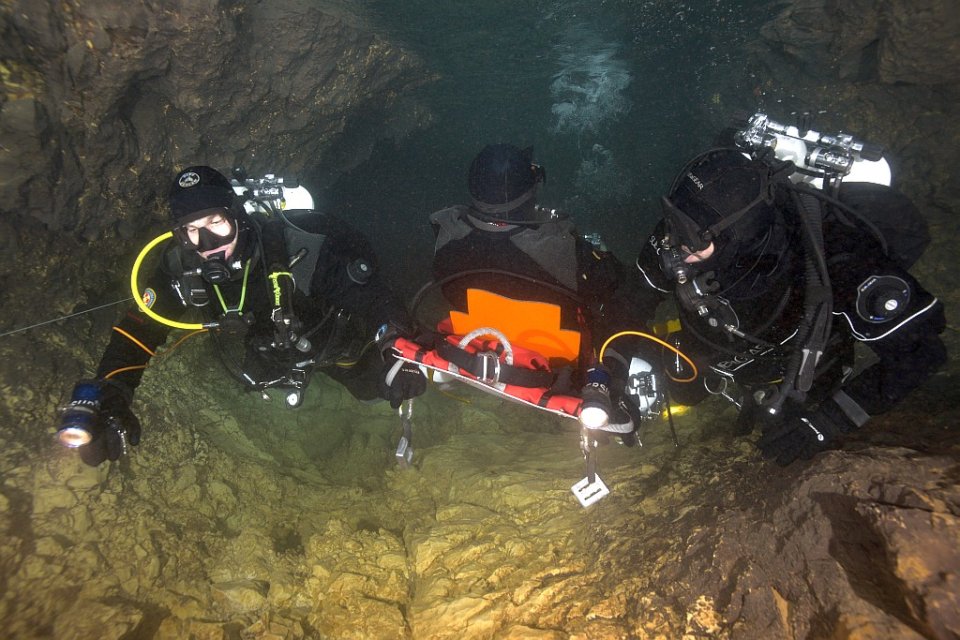
Specialist teams from HGSS are trained in underwater rescue from caves. Such caves exist all over Croatia in the karst rock, and also on some islands © HGSS The Croatian Mountain Rescue Service
Sometimes, our status as volunteers can give us problems. Although we have official duties, we are more like an NGO than something like the police. There can be legal implications. I remember one situation, very acute because a paraglider fell from the sky. None of his colleagues saw him fall. Paragliders go into the air together, but then they each branch off to do their own thing.
We had no idea about the location. We started from the last point of sighting, knowing that it could be very far from the place where he actually fell. But, we had to start somewhere. We had one mobile phone signal direction. But, you need three in order to locate someone. We only had a line on the map.
In the past, HGSS The Croatian Mountain Rescue Service sometimes had difficulties because the telephone companies wouldn't give us the information we needed in order to triangulate the position of a missing person. They would only give it to the police. But, it's a race against time. We searched for this man all day and all night. In the morning, some Croatian paragliders made private contact with a guy from the phone company. They begged him to release the information we needed. Although he could lose his job, giving such information to private citizens, he did it.
We found the man about 150 metres from where we were. Sadly, he was already dead. It was very small comfort to see that he had died instantly, on impact. It's unbearable when you reach someone you could have saved if only you had got there quicker, especially in an instance such as this, where we were hindered by a lack of information that was available. I think it moves more quickly now, but still we have to go through the police.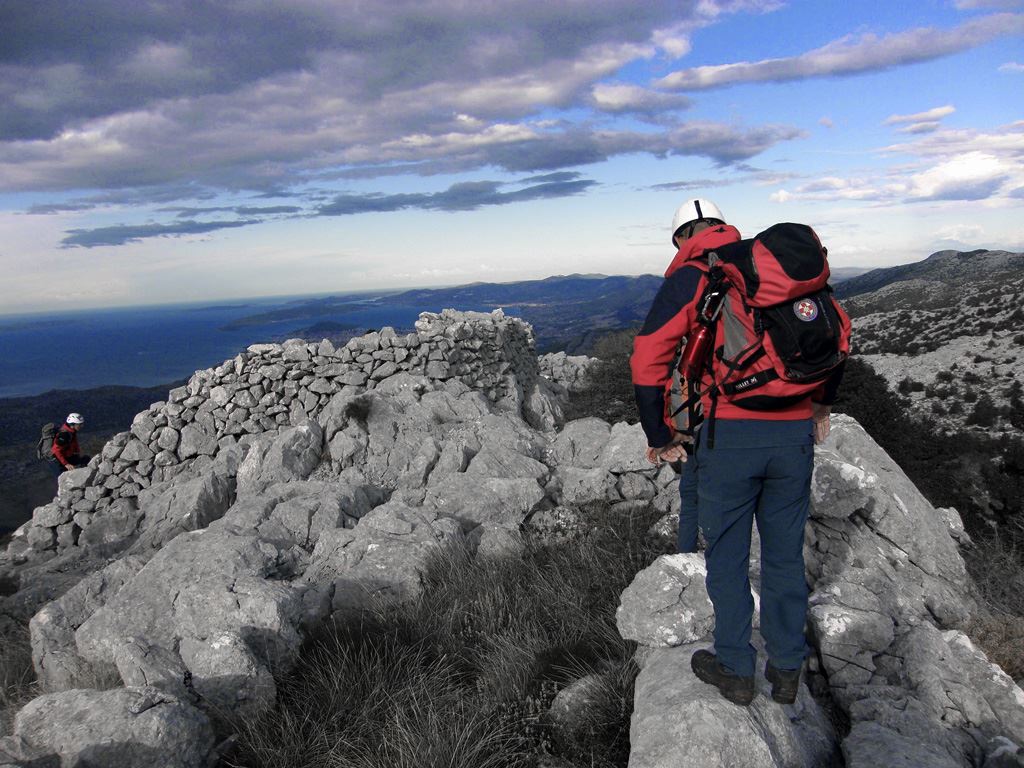
© HGSS The Croatian Mountain Rescue Service
One of the most emotional operations I went on was around five years ago, the rescue of a young girl - maybe two and a half to three years old – who got lost in the woods in a small place in central Istria. She chased into the forest after some dogs around 10 or 11 in the morning. The family saw immediately that she had disappeared and started to search. About two hours later, we were called out. It was impossible for the family to find her.
About 300 people came – my station, the Rijeka station, hunters, firemen, police and volunteers. In such an operation, the police are the lead service. But, 99% of the time they leave the organisation of the search to HGSS The Croatian Mountain Rescue Service. We are the only organisation who is very well educated in organising searches. When other people do searches, they use intuition. But, people all have different intuition. It can be chaotic. We are highly trained for this. There are procedures, recognised internationally, that we follow. We found her early in the morning, at around 7 o'clock. The dogs were lying on each side of her, giving her warmth.
All photos courtesy volunteers and HGSS The Croatian Mountain Rescue Service
Croatian Mountain Rescue Service Save Abandoned Dog From Cave
The Croatian Mountain Rescue Service (HGSS) has become well known for its witty Facebook statuses over the past couple of years or so, but not everything can be looked back at with a giggle. An animal in danger is one of them.
From warning tourists and other would-be mountaineers to perhaps refrain from trying to tackle mountains in the summer sunshine with no water and wearing only flip flops, to letting those who fancy themselves as Olympic swimmers that that pretty little island over there is actually a lot further away than it looks from the mainland, the Croatian Mountain Rescue Service, made up of generous volunteers from all types of jobs and walks of life, has been making us laugh in spite of the often ridiculous and downright dangerous scenarios they continually need to rescue people from.
Of course, not all of these stories and scenarios can have a funny spin put on them, and when it comes to abandoned animals suffering and in danger at the hands of careless humans, there can be no jokes. What there can be, however, is a very happy (and lucky) ending.
As Index writes on the 29th of December, 2018, as the Croatian Mountain Rescue Service reported, during the excavation of a cave in the area of Bratiškovci (Šibenik-Knin County), members of SOS HKP "Sveti Mihovil", which included four members of HGSS Šibenik who were the leaders of this expedition, heard the distressed barking and whining of a dog coming from somwhere in the dark and unwelcoming cave.
They immediately embarked on an action to locate and rescue the injured and underweight, clearly mistreated animal. Using specialist speleological techniques, the unlucky, unwell and frightened dog was located and pulled out of the cave to safety. Given the fact that when 112 was called, not one of the competent associations bothered to even respond, the dog was taken to safety and is currently being housed at the "Sea" (More) apothecary.
The members of HGSS Šibenik, as well as members of SOS "Sveti Mihovil", once again demonstrated their bravery, humanity and superior ability and talent to deal with serious situations in potentially dangerous caves.
Make sure to stay up to date with our news and lifestyle pages for much more.


